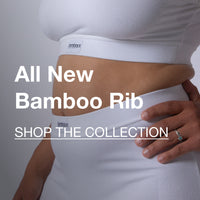What Is Sweat-Wicking Fabric, and Why Is It Good?

All of the different types of fabric used to make t-shirts, leggings, and other essential pieces of clothing serve unique purposes. Each material has its own unique ability, function, and care requirement.
So, what is sweat-wicking fabric, and why is it so beneficial for activewear?
An Overview of Sweat-Wicking Clothing
Time and time again, we hear about sweat-wicking fabric. Especially with snow and rainfall, people tell us we should get quick-drying materials for our winter clothes.
It’s not only for wintertime. Moisture-wicking clothing also comes in clutch during sweaty workouts. People say it keeps us drier and that it keeps us cool. Supposedly, it prevents chills, chafing, and body odor. So, what is this miracle fabric? Does it really do all those things?
If so, you need to know how it works.
What Does Sweat-Wicking Fabric Do?
On a functional level, sweat-wicking fabric draws moisture away from the skin and evaporates it in the air. On a technical level, there is a lot more at play.
Here’s how the fabric functions:
Cohesion
First, let's go back to eighth-grade science class and review cohesion.
Water is, in fact, sticky: It likes to stick to itself. That's why we have bodies of water. It's part of the reason a river flows. It's why some insects can stand atop water if they distribute their weight correctly.
Water molecules bond together and like to stay in that group. Therefore, when a water molecule moves, it takes more water with it.
However, there is one thing water loves to do even more than sticking to itself…
Adhesion
Water absolutely loves to stick to things other than water; this is especially true if a non-water molecule has a negative or positive charge.
So, if the water's adhesion to another surface is stronger than its cohesion to the body of water it comes from, the water will stick to that new surface and start to break away from the main body. Basically, it’s why your swimsuit stays wet when you jump out of the pool (which is one big reason why people love quick-drying swimwear).
Here's where something funny happens: Even if the adhesion is stronger, cohesion still exists. So, as one molecule is drawn to the new surface, so too is the one nearest to it, and the one after that, and the one after that. This is what allows water to climb vertical surfaces.
However, the main body will still have a pull on the climbing water, so it will only climb as far as it can resist the gravity of the whole body of water.
This process also leads to a fascinating phenomenon called capillary action.
Capillary Action
Now we know that adhesion can pull water along a surface, and cohesion invites its friends. Now we can tie that into the wicking phenomenon with capillary action.
Capillary action is when water moves in a direction against gravity because of adhesion, allowing the water to spread.
Think about when you clean a liquid up with a paper towel. Say the spill is the size of a quarter and maybe a centimeter deep. Yet, when you press the paper towel on it, the damp part of the towel is now the size of three or four-quarters. We know there isn't just magically more water. That can't happen.
So what did happen?
Well, while it might not seem like much of a lift, water has been soaked up tiny tubes in the paper towel, which act like arteries to a whole network of offshoots and veins all through the towel.
Capillary action forces the quarter-sized amount of water to travel through the paper towel, thus both widening its surface area and thinning its depth in the process of drawing it into the towel.
So, if sweat-wicking fabric was just like a paper towel, wouldn't it get soggy and stinky after a while? The answer is yes.
Luckily for us, the sweat-wicking fabric takes one more extra step than your regular old paper towel.
Moisture Wicking
Water moves to dryness if given a chance; it's the same way hot air moves to cool. Like living things, elements have a carrying capacity of their own, and when they get overcrowded, they naturally move to amend that.
Sweat-wicking fabrics have a larger tunnel opening on the side of the fabric that touches your skin and smaller ones on the side that faces away from you. This allows the sweat to travel all the way through your garment and then evaporate into the air.
Bestseller Sweat and Moisture-Wicking Fabrics
Before we close off here, let's go over some fabrics that get a gold star for their sweat-wicking abilities.
These materials often are used to create athleisure clothing thanks to their breathability, softness, and flexibility.
Nylon
Coming in third is one of the original synthetic fabrics.
Nylon has long been a champion of the activewear world, boasting a light and stretchy feel. This is a fabric you can count on in the heat. Good news — now we know it's a sweat-wicking fabric, too, and one of the best to boot!
At tomboyx, we featured nylon in the mesh lining of our Full Spectrum Bra. Nylon became super popular in the 1940s as a replacement for silk in stockings.
Nylon is still famous for its durability and compression, making it perfect for the Full Spectrum Bra and as the shell and mesh lining in the Ribbed Swim Sun Shield Crop Top. When combined with Spandex and polyester, nylon is a force to be reckoned with.
Polyester
Like Spandex and nylon, polyester is a giant in synthetic fabrics. The fashion world uses polyester in everything, from school clothes to activewear like windbreakers.
It even takes a reigning seat in the majority of cotton blends. Polyester is a hard one to beat when it comes to water-wicking efficiency. Plus, with garments like windbreakers made from recycled polyester, synthetic fabrics can be more environmentally-friendly than ever.
Merino Wool
Merino wool doesn’t retain odors and wicks water with amazing proficiency. A natural fiber, wool is cozy and breathable. Our tomboyx Beanie is made from 100% Merino wool (and vegan leather) in Minnesota. In brown, gray, and black colorways, you can match the entirety of your fall and winter wardrobe.
Why Do I Need Sweat-Wicking Fabric?
If you do any outdoor (or indoor) aerobic activities, you'll want some moisture-wicking clothes. In addition, you may want those clothes for some simple everyday activities as well.
You can benefit from sweat-wicking clothing in a variety of situations. That extra protection from sweat can help when you're taking your dog for a long walk, running around with the kids at a park, or even strolling through your local farmer’s market.
Summer
In the summer, it is a good idea to have at least one lightweight outfit made of a sweat-wicking material to take the sweat off your skin. You may think sweat is the body's best natural coolant — why would you want the sweat off?
Well, you want hoodies, tights, and other essentials made from moisture-wicking fabric because sweat cools you down not by being on your skin but by evaporating off it.
Being drenched in sweat when it has nowhere to go isn't fun for anyone. These fabrics help to speed up the evaporating process and cool you down faster. In super-hot climates, this can be a game-changer.
Obviously, wearing sweat-wicking clothing isn't the only precaution you should take against conditions like heat stroke. Make sure to exercise safely in the summer by drinking plenty of water, workout in the early morning or late evening, and wearing sunscreen.
Drinking water and not overworking yourself is great too, but moisture-wicking materials are a helpful extra step.
Winter
Because of this wicking and evaporation function, the fabric tends to dry quickly. This is helpful in the winter since not having excess moisture on your skin goes a long way in staying warm.
In cold climates, you want the layer closest to your skin to be sweat-wicking fabric. This layer could be something like a long-sleeve tee or a modal sweater. The layers after that should be thermal, then water-repellant ones in case there’s a rainstorm.
Where To Get Started
Now that we’ve reviewed the award-winning qualities of sweat-wicking fabrics, it’s time to celebrate something else that’s equally awesome: the emergence of gender-neutral clothing. Shopping should be fun and rewarding for everyone — for every gender identity and every size. At tomboyx, we bring style and quality for all — high-quality pieces that feel as good as they look.
Sources:
8 Tips for Working Out in the Heat | Penn Medicine
Adhesion and Cohesion of Water | U.S. Geological Survey
Nylon: A Revolution in Textiles | Science History Institute
Capillary Action: Definition and Examples | ThoughtCo





